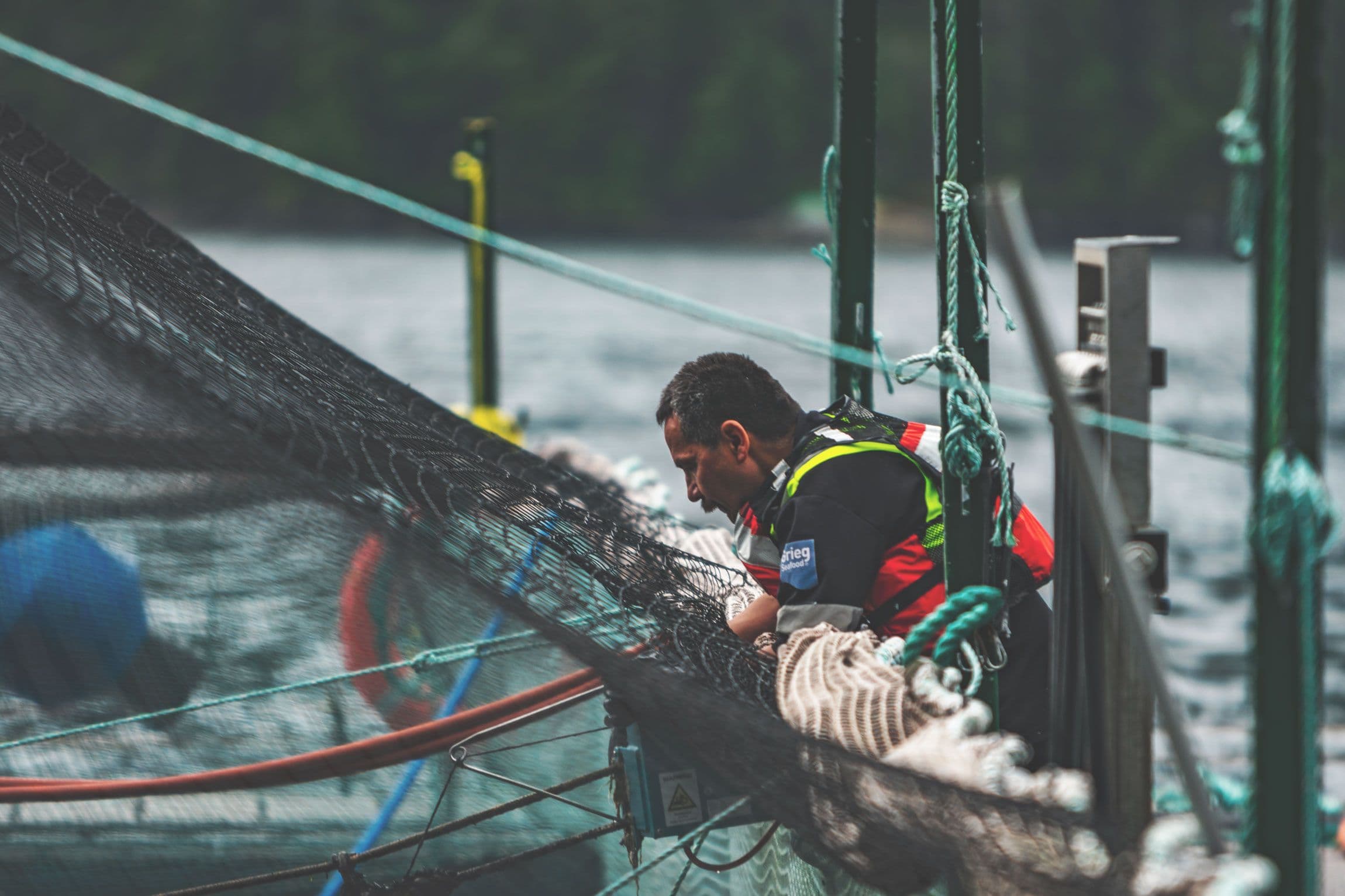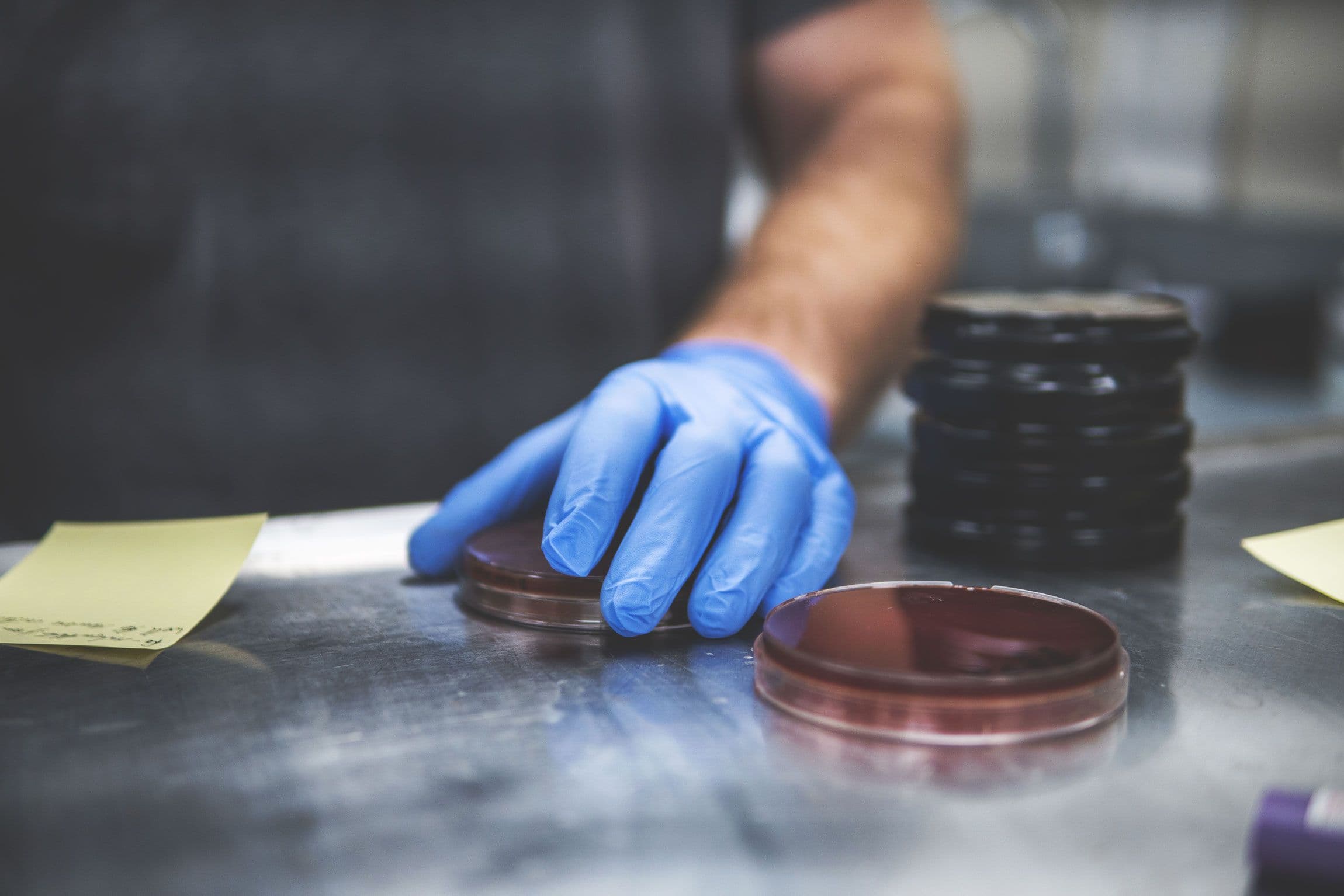
It takes a big, committed team to raise our fish, from egg to harvest. On this page you will learn about the life cycle of our fish, and how our employees support it to grow healthy, beautiful salmon.
We are an inclusive employer, and welcome applications from all qualified individuals.
Freshwater Production
At Grieg, our fish are reared in a freshwater land-based facility in Gold River on the west coast of Vancouver Island. Here Hatchery Technicians carefully tend our fish through their early life cycle from eggs, alevins, fry, parr and finally to smolts. Grieg has 24 employees working at our hatchery, working shifts of eight days on six days off, and we use a three-level system for our technicians for advancement.
As eggs and alevins, our technicians carefully maintain water quality and temperature to ensure a healthy transition. Once their yolk sacs are absorbed, these fry begin to eat pellet food, which technicians monitor and distribute regularly for optimum growth. Again, water temperature and quality is checked and maintained many times per day.
These controls grow as the fish do, and once the fish have become smolts and are robust enough to endure salt water, they are pumped into a wellboat and taken to one of our farms to grow out to reach harvest size.
Saltwater Production
Grieg has 22 farms off the east and west coasts of Vancouver Island, as well as the Sunshine Coast. These farms receive smolts from our hatchery, and our Aquaculture Technicians work from dawn to dusk feeding, water sampling for harmful plankton, sea lice counting, mort picking and net checks, to name a few duties. The fish grow out in these open net pens for 18 to 22 months until they are harvested and sent off to markets in Canada, the US and Asia.
Our farmers live on floating accommodation barges attached to our net pen systems. They work eight days on, six days off, and are supplied with transportation to get to and from their work site. These accommodation barges are modern and built to suit the comfort of our hardworking employees. Each worker gets a private room, with shared a kitchen, washroom, living room, exercise room and laundry.
A typical workday on a farm begins with feeding, water quality checks and inspections. Throughout the day feeding continues, along with other duties such as sea lice monitoring, mort removal, maintenance and harvesting. We use a three-level system for our aquaculture technicians for advancement.
To see a day in the life of a Grieg farmer in BC, watch the following video:
Operations
Our farmers can’t do what they do without the support of our Operations team. This hardworking team consists of net washers and workboat crew and operators. These positions are eight days on, six days off, and work at all of our sites on both coasts of Vancouver Island and the Sunshine Coast. The crew either stays on their work boat or at one of our farm’s accommodation barges.
Often these jobs are physical, requiring some strength and physical fitness to assist with maintenance, net changes, assembly and harvesting duties. There can also be some automated machinery involved.

